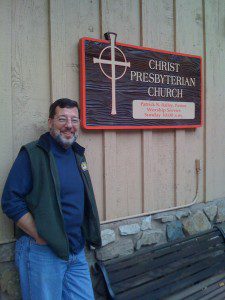
11 May REV. PAT BAILEY: EVOLVING LANDSCAPES, “THE BIG PICTURE”
Editor’s note: Rev. Pat Bailey, pastor of Telluride’s Christ Presbyterian Church, takes a developmental and evolutionary view of faith, spirituality, and religious community. Join him for his weekly blog as he explores the ever-changing landscapes of perspectives and consciousness and discusses both the challenges and promise of trying to make meaning in our evolving social context. Rev. Bailey holds a Master of Divinity from Columbia Seminary, a Master of Theology in comparative religion from Emory University, and will receive his Doctor of Ministry from San Francisco Theological Seminary in May.

Pastor Pat Bailey
For the last couple of weeks I have been talking about different ways of describing that which connects the natural order as a whole and compels that order toward generativity and complexity. So, I have engaged various descriptions found in scientific, Taoist, and Hebrew cosmologies. I have also claimed that this is the big question of our time, one that has in many ways replaced the old speculation about the existence of God.
One of the leading authorities on religions of the world, Huston Smith, in speaking about this very thing, contrasts the traditional worldview with the modern worldview. In an audio program entitled “The Big Picture,” Smith says that in traditional thought there was assumed a fundamental divide between this world (the world of our everyday experience) and another world (a more inclusive and empowering world pervaded with meaning, values, and purposes). He then reviews the ways in which Chinese, South Asian, Western, and Indigenous religions described this “other world,” some theistic and some not.
Smith then goes on to decry what he sees as a loss or forgetfulness of this “other world” in the modern scientific era. While he acknowledges such transcendence cannot be proved, he argues that to shut out all possibility of such is not in itself a rational move because it limits our knowing to only our physical senses augmented by science.
This is not the old religion vs. science battle that pits doctrinal supernaturalism against doctrinal scientism. This is a more subtle question about the mystery of reality and the possibility of something unitary and in some sense purposeful to the universe or within which the universe resides. If this constitutes “another world,” then it is a world within which “this world” is thoroughly integrated. As such, the question is one equally engaging of both science and religion and stretches each beyond their assumed paradigms.
Viewing humanity’s spiritual traditions from an evolutionary perspective allows us to draw from those traditions insights that may be hidden from strictly rational consciousness without having to accept mythological or pre-rational frames of reference. In that way, we allow those traditions to speak at their deepest level, a shared wonder at the mystery of our existence and its many worlds.


Sorry, the comment form is closed at this time.